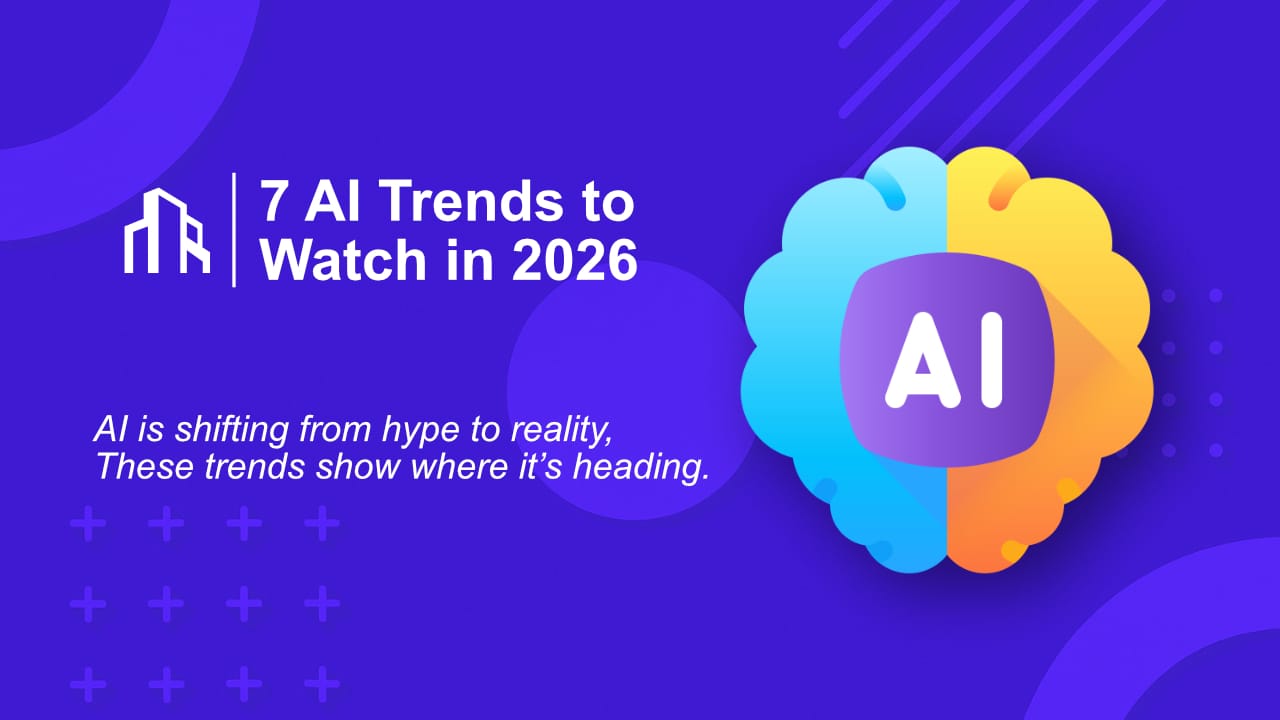7 AI Trends to Watch in 2026 That Will Redefine Work
These 7 trends reveal how AI is actively changing work in 2026 and what that means for teams, tools, and outcomes.

For 2026, the question isn’t if your organisation uses AI, but how well it aligns with the trends that are already accelerating. Below are seven clear trends, grounded in research and industry signals, that business leaders must understand and act on.
In-Chat Purchases Inside AI Conversations
1. Embedded AI in Everyday Business Software
Research shows that AI isn’t just added to business tools it’s being built in. Reports from Gartner highlight that by 2026 many enterprises will rely on “AI‑native development platforms” rather than bolt‑on tools. (gartner.com)
EU AI Act 2026
Business impact: Your team’s existing tools (CRM, ERP, collaboration) will adopt AI capabilities. Training will shift from how to use software to how to work with AI‑enhanced features.
Discover smart AI tools to streamline your next automation
2. New AI‑Driven Roles and Cross‑Functional Teams
Data indicates that talent demand is shifting rapidly: roles like prompt engineers, “agent ops”, and AI workflow leads are increasing. (vistage.com)
Business impact: Hiring and organizational structures must adapt. AI shouldn’t reside only in IT; it needs representation in operations, HR, and customer experience.
3. Workflow Automation Moves to AI‑Led Orchestration
Enterprise surveys (see Deloitte) highlight “agentic AI” autonomous, multi‑step AI workflows as a core trend for 2026. (deloitte.com)
Business impact: Rather than automating one task at a time, companies will adopt systems where AI coordinates end‑to‑end workflows. Miss this shift and you risk lagging in speed and agility.

Descript
AI-powered audio and video editing platform with transcription, screen recording, and publishing features. Perfect for teams looking to streamline content creation and repurposing.
- ✓ Transcription and AI-powered editing
- ✓ Screen recording and multi-track editing
- ✓ Publishing and collaboration tools
4. Uncontrolled AI Use Inside Organisations
Reports signal a rise in “shadow AI” employees using AI tools without formal oversight. (camelai.com)
Business impact: These hidden uses introduce data risks and inconsistent experiences. Governance must shift from forbidding to enabling: define safe zones, preferred tools, and policies.
5. AI Governance and Compliance Become Board‑Level Issues
Trends show regulatory pressure increasing around data, models, and AI actions. For example, China plans 50+ AI‑standards by 2026. (reuters.com)
Business impact: AI is no longer just a technical issue it touches legal, ethical, brand, and operational domains. Proper frameworks will be a competitive differentiator.
6. Search and Knowledge Work Replaced by Conversational AI Interfaces
Research indicates that the shift from menus and dashboards to conversational query interfaces is accelerating. (ibm.com)
Business impact: Internal knowledge systems and external customer experiences will expect AI‑driven conversation. If your business still relies on manual search and old UI/UX, you’re already behind.

Rank Prompt Analytics
Track, test, and improve your AI prompts with precision. Rank Prompt helps you analyze how ChatGPT, Claude, and Perplexity respond — giving you real data on what performs best for engagement, accuracy, and conversions.
- ✓ Measure prompt effectiveness across AI models
- ✓ Compare output quality, tone, and accuracy
- ✓ Optimize prompts for higher visibility and trust
7. Organisations Built Around Agents, Not Just People+Tools
Industry analysis shows that companies are increasingly structuring operations around autonomous agents rather than simply adding tools. (bondcap.com)
Business impact: This doesn’t mean replacing humans. It means rethinking roles, processes, value chains. If you treat AI as just a tool, you’ll miss the broader operational transformation.
What This Means for You
These seven trends aren’t distant possibilities they’re evolving realities. As a business leader you need to ask:
- Which of these trends are already underway in my organisation?
- Where are we falling behind?
- Who is accountable for bridging the gap?
How Scalevise Helps
At Scalevise, we guide businesses to translate these trends into clear operational plans. From embedding AI in your tools to defining governance and restructuring workflows we help you act rather than just react. Schedule a strategy session and align your company with 2026’s mission‑critical shifts.
